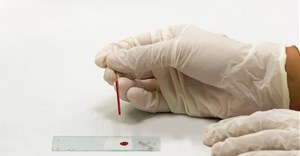Trending
Elections 2024
Jobs
- General Manager Vereeniging
- Front Desk Coordinator/Receptionist Vereeniging
- Tourism Update - Sales Executive (Junior to intermediate) Johannesburg
Prostate cancer - new research on screening

Prostate cancer, afflicting mostly male over age 60, is the second most commonly diagnosed cancer in men (after skin cancer) and is among the leading cause of cancer-related deaths in men, according to World Health Organization.
Common screening routines for prostate cancer are blood test to detect elevated level of a protein produced by the prostate called prostate-specific antigen (PSA), and/or a digital rectal exam (DRE) in which a doctor feels the prostate through the rectum to search for lumps known as nodules.
If PSA or DRE test results are abnormal, there are several tests, which can be administered to help confirm a diagnosis of prostate cancer, according to the American Society of Clinical Oncology's recommendation. A magnetic resonance imaging (MRI), for instance, uses magnetic fields to produce detailed images of the body and measure the tumour's size. A trans-rectal ultrasound (TRUS) test, meanwhile, is a procedure in which a doctor inserts a probe into the rectum to capture images of the prostate using sound waves. TRUS is usually done at the same time as another test: core needle biopsy, in which a thin, hollow needle pierces through the rectum wall to remove a small core prostate tissue for microscopic examination.
While other tests may suggest that cancer is present, only a biopsy can usually make a definite diagnosis. However, the Trinity College Dublin scientists led by Dr Diarmaid C Moran and Dr Laure Marignol noted that only 25%-30% of men with moderately elevated PSA eventually have prostate cancer confirmed at biopsy, and therefore many biopsies may ultimately prove unnecessary.
Screening numbers dropping
The dire need for better screening process was demonstrated recently when the American Cancer Society, in study released in Nov 2015, which gained wide media coverage, reported that fewer men are actually being screened for prostate cancer in the US and fewer early-stage cases are being detected. This is quite possibly an indirect result of a guideline issued by independent panel experts of United States Preventive Services Task Force that recommended in 2012 against PSA screening for all otherwise healthy men.
The Task Force panel decided that risks outweighed the benefits of routine blood tests for PSA, the New York Times stated in an article. "Because prostate cancer often grows slowly, screening finds many tumours that might never have harmed the patient. As a result, the panel concluded, testing saves few lives and leads too many men into unneeded surgery or radiation, which often leaves them impotent and incontinent."
However, according to the American Cancer Society report's lead researcher Ahmedin Jemal, current technology still cannot differentiate which early-stage tumours will grow to become lethal. "The Task Force's recommendation is a double-edged sword. We may be reducing over diagnosis and overtreatment... but we also may be missing opportunities to detect cancer that will cause harm. That's the dilemma with PSA testing."
While PSA is still recommended after a confirmed diagnosis of prostate cancer, new clinical screening tools and strategies are clearly required to decrease the unnecessary biopsy rate. "Hence, there is a growing demand for individualized treatment plans, which necessitates the accurate characterization of the location, extent and aggressiveness of the tumour," Moran and Marignol's team stated.
MRI tests
According to the scientists, "There has been great interest in determining the presence or absence of tumour non-invasively with combined anatomical and functional MRI." Their findings proposed combining high-resolution images and functional techniques using MRI upon diagnosis based on TRUS-guided biopsy performed.
"MRI is well-validated for local staging of prostate cancer using qualitative assessment, including high-resolution T2W images once the diagnosis has been established by TRUS biopsy," they noted. The study sought to determine the accuracy of three Apparent Diffusion Coefficient (ADC) threshold values in detecting prostate cancer prior to prostate biopsy in patients undergoing endorectal diffusion weighted (DW)-MRI.
"Amongst the three functional parametric techniques available, DW-MRI has substantial advantages over the other two (dynamic contrast enhanced-MRI and MR Spectroscopy) because it does not require intravenous contrast, is relatively simple to implement and the software required to generate ADC maps is readily available," their report stated.
Variations in cellular structure between benign and malignant tissue manifest as differences in water diffusion. These differences can be exploited to improve prostate cancer detection qualitatively but also quantitatively by measuring changes in the ADC to potentially measure the aggressiveness of the tumour, according to the scientists.
Clinical trials
The Dublin team studied 60 men with a clinical suspicion of prostate cancer who underwent endorectal DW-MRI at 3.0 Tesla. Three ADC threshold values (tADC: 1.0, 1.2 and 1.4x10-3mm2/s) were sequentially applied to ADC maps for the detection of malignant lesions in the prostatic peripheral zone.
The results, specifically at tADC 1.0x10-3mm2/s, proved "considerably more accurate than PSA alone and offers promise as a tool for not only screening of peripheral zone prostate cancer but potentially also for characterizing its aggressiveness," their findings noted. This concept is particularly important in the context of over-diagnosis and over-treatment of clinically insignificant cancers.
The study duly acknowledged that more large-scale, adequately powered, randomised and standardised studies are needed to determine whether Gleason-score-specific (the most common grading system for prostate cancer's prognosis) ADC values can be established.
"If this could be achieved, incorporation of ADC values into a diagnostic algorithm in combination with other clinical parameters such as PSA and DRE might ultimately allow low-risk patients to forego biopsy," the scientists said.
Additionally, for patients undergoing a policy of active surveillance, decrease in the ADC values over baseline during serial follow-up might signal an imperative for change to active treatment, they concluded.
For more information, go to www.advmodoncolres.com/index.php/AMOR/article/view/37/35.














